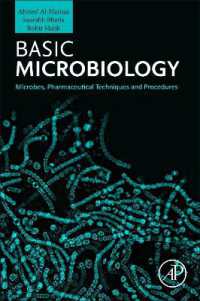- ホーム
- > 洋書
- > ドイツ書
- > Humanities, Arts & Music
- > Linguistics
- > english linguistics
Description
(Text)
Document from the year 2017 in the subject English Language and Literature Studies - Literature, Federal University of Santa Catarina (CCE), course: Literary Studies, language: English, abstract: I propose in this study a comparative analysis of the following books: Fahrenheit 451 (BRADBURY, 1953), The Book Thief (ZUSAK, 2006), and The Shadow of the Wind (ZAFON, 2009), aiming at identifying how the presence of fire influences the development of each narrative. For the sake of organization, my reading is guided by three specific enquiries: 1) How the three monstrous creatures permeating the novels are structured - Laín Coubert, the fireman, and Death, being fire behind their monstrousness. 2) To what extent literary fascination transforms the main characters of the stories - chiefly in three key moments: the discovery of the secret library, the woman who is burnt with her books, and Clarisse's visit to the mayor's house. 3) What role the children emerging from these pieces - Daniel, Clarisse, and Liesel - play. With the framework of Borges' literary essay "The Wall and the Books" (1952) and Hoeven's book Lost Memory: Destroyed Libraries and Archives (1996), I establish such parallels as I envisage the ultimate goal of this reflection: how fire is deployed in these specific literary evidences. My results show that: each novel is a response to historical moments when books have been burnt to the benefit of a certain ideological agenda, albeit fire also serves other purposes therein. It is, in Zafón's (2009) novel, connected to the erasure of the past of a single man; in Zusak's (2006) as a tool of a specific dictatorial regime; and in Bradbury's (1953) completely institutionalized by hegemonic instances. As the destruction of threatening texts is a common strategy of censorship, my analysis allows me to conclude that this endeavor to silence literature ends up empowering its attributes. After all, the life of men shall always be more ephemeral than that of the words.








